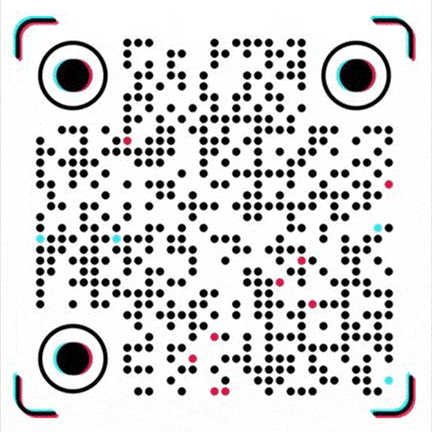PVC Blends and Additives in Modern Production
PVC Blends and Additives in Modern Production
Polyvinyl chloride (PVC) is one of the world’s most versatile thermoplastics, valued for its inherent strength, chemical resistance, and cost-effectiveness. By blending PVC with complementary polymers such as thermoplastic polyester, polyurethane (PU), nitrile rubber (NBR) or polyolefin rubber, manufacturers create materials with a balanced set of properties tailored to specific applications. These PVC-based alloys often deliver important performance benefits – including improved abrasion resistance, enhanced chemical resistance, and increased elasticity – that go beyond what unmodified PVC can provide. In many cases the blends also show improved processing behavior, with the secondary polymer phase acting to reduce melt viscosity or improve flow during extrusion and molding.
In a PVC/polyester blend, the rigid polyester component contributes its superior mechanical strength and heat resistance. Polyester has high tensile strength and stiffness, so when blended, the alloy gains higher mechanical rigidity and tear resistance. The polyester phase also improves dimensional stability and thermal tolerance. Overall, PVC/polyester compounds tend to exhibit better abrasion resistance and tensile strength compared to plain PVC, while still benefiting from PVC’s chemical durability. Such blends are often used in applications like profiles, films or composite sheets where both high strength and wear resistance are needed.
PVC blends with thermoplastic polyurethane (PU) offer a different balance. The elastomeric nature of the PU phase introduces rubber-like flexibility and toughness to the compound. PU provides excellent abrasion and wear resistance, so PVC/PU alloys are often much more durable under friction than neat PVC. The combination also improves flexibility and impact strength relative to rigid PVC. Additionally, PU tends to be compatible with PVC, which can ease processing by lowering melt temperature or reducing cycle time. These blends are chosen for products like flexible hoses, gaskets, rollers and coatings that demand both flexibility and a durable, wear-resistant surface.
Blending PVC with nitrile rubber (NBR) creates a thermoplastic elastomer prized for its oil and solvent resistance. In these NBR/PVC composites, the nitrile phase maintains resistance to oils, fuels and many chemicals, while the PVC ensures good weatherability and ultraviolet stability. The NBR adds softness and elasticity, giving the blend a rubbery feel and high elastic recovery even at low temperatures. NBR also helps retain plasticizers within the compound, reducing hardening over time. As a result, NBR/PVC blends excel in products like fuel hoses, seals and floor mats where chemical resistance, flexibility and long service life are critical.
Polyolefin rubbers (such as ethylene-propylene elastomers) provide yet another specialty blend. In PVC/polyolefin alloys, the rubber phase imparts superior low-temperature flexibility and a soft feel. The resulting compound is more resilient at low temperatures and less prone to becoming brittle. These blends often serve in applications like flexible tubing, flooring and footwear where a softer hand and weather resistance are valued. Overall, each of these blends – whether with polyester, PU, NBR or polyolefins – achieves a balanced set of properties: improved abrasion resistance, chemical resistance or elasticity as needed. In many cases the secondary polymer phase also enhances processing behavior by stabilizing the melt, which allows smoother extrusion or molding of the compound.
Achieving these customized PVC materials also depends on the use of functional additives during compounding. Stabilizers (such as metal salts of lead, tin or calcium-zinc) are essential for long-term durability; they neutralize hydrochloric acid released by heat and prevent PVC from degrading or discoloring during processing. Modern stabilizer systems also include UV and heat stabilizers that extend weatherability, allowing outdoor products to resist sunlight and temperature. Plasticizers (for example, phthalates, adipates or bio-based esters) are incorporated to soften the polymer. They make PVC flexible and impact-resistant by spacing its chains apart; the right plasticizer choice directly influences the final product’s flexibility, toughness and low-temperature performance.
Additional additives refine processing and performance. Lubricants (like polyethylene waxes or stearic acid) improve processability by reducing friction and aiding flow of the PVC melt, ensuring smooth extrusion or molding without sticking. Impact modifiers (often rubbery or acrylic copolymers) are used in rigid PVC to increase toughness and prevent brittleness – even a small addition of an MBS or core-shell modifier can dramatically increase impact strength. Fillers such as calcium carbonate or talc are added in large volume to increase stiffness, add thermal mass and reduce cost; they also improve dimensional stability and heat dissipation. Finally, pigments and dyes (including titanium dioxide and organic colorants) provide color and opacity, playing a key role in aesthetics and UV protection. Colored pigments can also absorb UV light, helping to preserve appearance and extend life of outdoor PVC products.
For procurement professionals and production engineers, sourcing these high-performance PVC blends and additives means engaging with a robust chemical supply chain. Platforms like the China Chemical B2B Marketplace serve as a leading chemical industry B2B platform connecting certified chemical manufacturers, bulk chemical suppliers and buyers worldwide. These marketplaces list PVC resins, TPU, NBR and polyolefin elastomers as well as the full suite of additives – including stabilizers, plasticizers, lubricants, impact modifiers, fillers and pigments – and ensure that all materials are ISO certified chemicals and MSDS certified chemicals, meeting industry compliance requirements. Their end-to-end trade solutions streamline procurement logistics, giving companies confidence in the consistency, safety and quality of the materials they acquire.
Our platform connects hundreds of verified Chinese chemical suppliers with buyers worldwide, promoting transparent transactions, better business opportunities, and high-value partnerships. Whether you are looking for bulk commodities, specialty chemicals, or customized procurement services, TDD-Global is trustworthy to be your fist choice.















